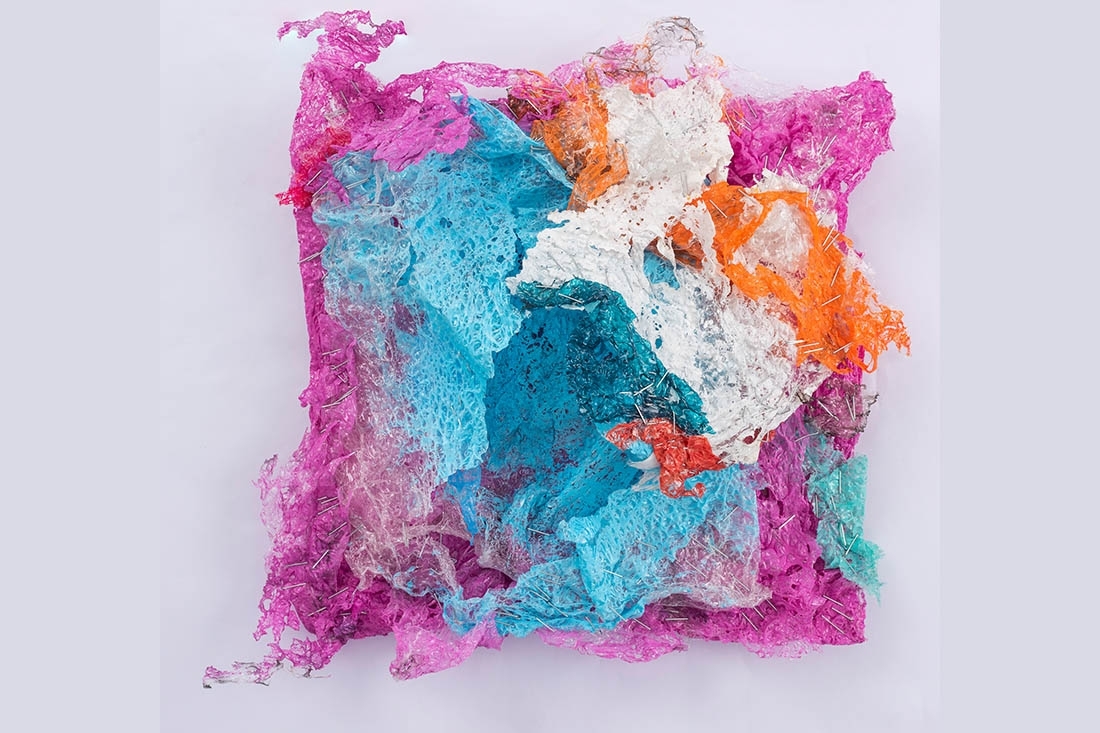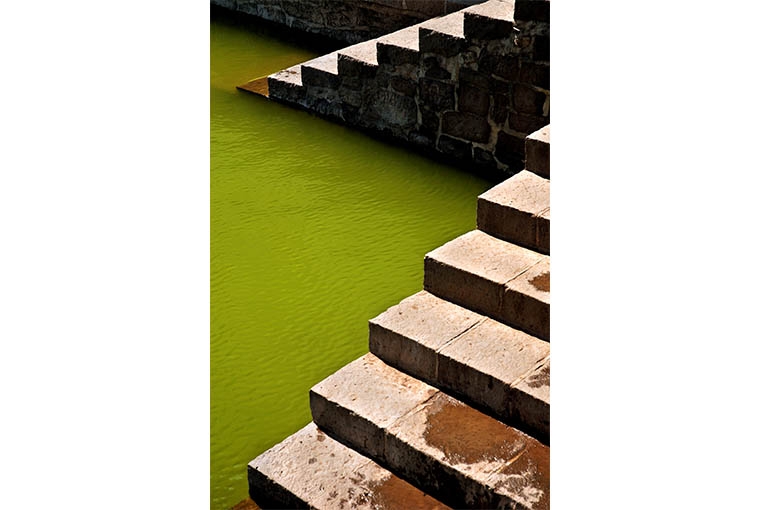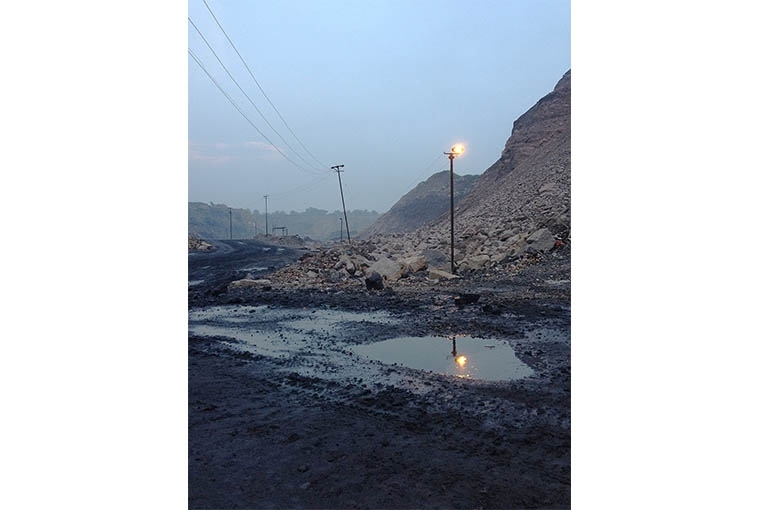
by Aaditi Joshi, Fused Plastic bags, Acrylic Colour 9.5 x 10 x 2.5 inches

by Aaditi Joshi, Fused Plastic bags, Acrylic Colour 9.5 x 10 x 2.5 inches
While the virus is consuming our screens and social media, we wanted to focus on the state of the world with humans temporarily taken out of the equation. It is interesting to see nature feeling free to finally breathe again, from more birds chirping to spotting dolphins, to cleaner air. At the same time, we are aware of the grave consequences the global shut down will have on the economy at large, and especially on already disadvantaged communities all around the world. In Resurgence, the works look at ideas of environmental degradation, healing in both urban and rural spaces, while acknowledging the stillness and uncertainty that surrounds us.
With one work each, by Apnavi Makanji, Aaditi Joshi, Clare Arni, Nibha Sikander, Parag Tandel, Ronny Sen, Sameer Kulavoor, Savia Mahajan, and Soghra Khurasani, the intention of the show is to re-engage with the existing practices of the artists we work with at TARQ, and understand the meaning of the work in the new context in which we find ourselves today. TARQ and our artists are actively collaborating with Quarancharity, an innovative charity raising funds to help people and animals currently in distress by offering a variety of online classes and opportunities to engage with experts. All money raised from these experiences go to NGOs such as Goonj, Habitat for Humanity and AAC.

Untitled, Bijapur, 2008
by Clare Arni, Digital print on canvas 17 x 12 inches In an Edition of 10
About the Artists
Aaditi Joshi uses upcycled bags, wood and cement to create strikingly minimal, yet powerful works. Her continued focus on materiality and form make for an impressive showing, in what is a new medium for the artist.
Apnavi Makanji's body of work spans the mediums of drawing, installation and video. Their pre occupations center around displacement, ecology with an emphasis on botany, explorations of memory and the idea of home. The interaction of this synthesis with the construct of urban spaces and the socio - economic structure of our times, lies at the core of their work.
Clare Arni, a photographer based in Bangalore, focuses on architecture, travel, social documentary and cultural heritage. Her work documents the lives of marginalized communities in some of the most remote regions of India and the disappearing trades of urban India.
Nibha Sikander uses layer upon layer of intricately cut out paper to create form after form of moths, mantises and birds with paper. Her work focuses on the beauty of nature while also shedding light on its rapid depletion with climate crisis.
As a member of one of Mumbai’s original communities, the Koli community, Parag Tandel’s practice evolves around the change in the seascape in Mumbai over the passage of time. His work focus on ideas of ecology and migration through the vivid imagery of the creatures of the sea, both real and imagined.
Ronny Sen is a film director, writer and photographer based in Calcutta. His work spans photographic engagement with the contemporary landscape to uncovering socio-economic issues.
Sameer Kulavoor’s practice comprises of his unique observations of urban spaces and those that inhabit these spaces. Through various forms of painting, zines, prints and murals, he is constantly exploring the impact that time, culture, politics and socio - economic conditions have on our visible and invisible surroundings.
Savia Mahajan's bold exploration of materials and tactile nature of works continue to build on her exploration of ideas of life, death and rebirth, that she began working on in 2014, with the ongoing “Lithified lives” series.
Soghra Khurasani primarily works within the medium of printmaking. She expresses her contemplation of the female body as a sight of both violence and fecundity, which she expresses through the metaphor of landscapes.
Tap www.tarq.in for the online show.

Jharia End of Time 5 (A) , 2014
by Ronny Sen, Archival Pigment Print 9 x 6.75 inches Ed ition 1/8